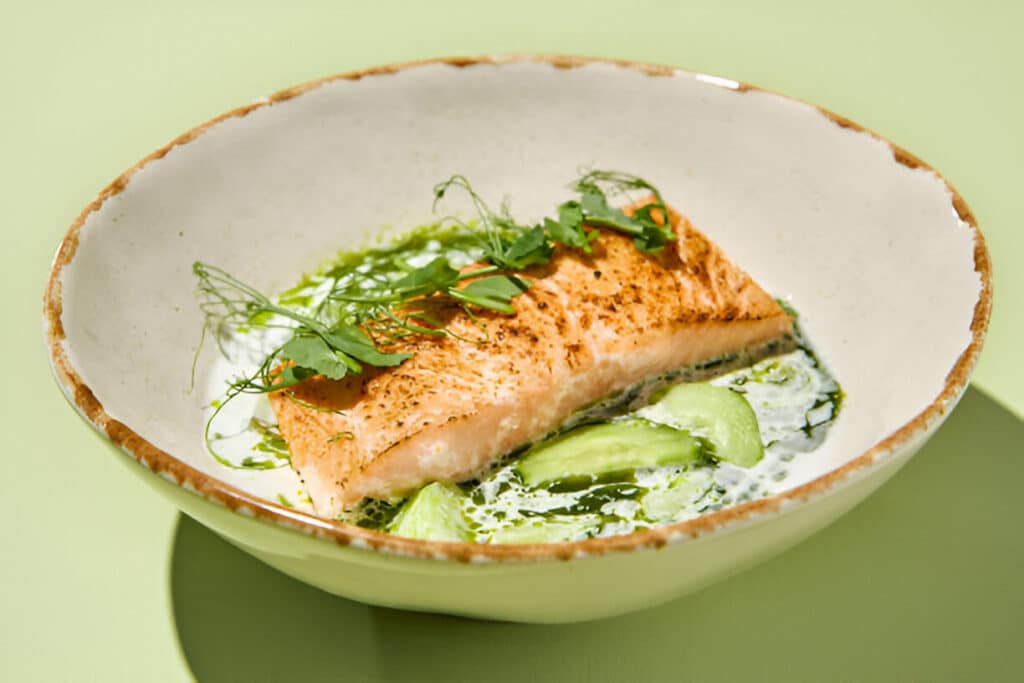Few things in the world of cooking are as satisfying as a perfectly seared steak. That golden-brown crust, packed with deep, savory flavors, is what separates a good steak from a truly unforgettable one. Whether you’re cooking at home or dining at a top-tier steakhouse or restaurants in harbor view Suffolk, mastering the sear is key to elevating any cut of beef.
So, what exactly makes that crust so important, and how can you achieve it? Let’s break down the science, technique, and secrets behind the perfect sear.
The Science Behind the Sear: The Maillard Reaction
At the heart of a perfect sear is a little culinary magic known as the Maillard reaction. This process, named after French chemist Louis-Camille Maillard, is what gives seared meats their deep flavor, rich aroma, and mouthwatering crust.
When meat is exposed to high heat, the natural amino acids and sugars react, forming hundreds of new flavor compounds. The result? That caramelized, umami-packed crust that makes steak, pork chops, and even seafood so irresistible.
Studies have shown that foods cooked using the Maillard reaction release over 1,000 different aromatic compounds, which is why seared meat smells and tastes so incredible. This reaction begins at around 285°F (140°C) and really gets going above 300°F (150°C), making high heat a must for a proper sear.
Why a Good Sear Matters?
A perfect crust does more than just make a steak look beautiful—it enhances the overall experience in a few key ways:
1. Boosts Flavor
A great sear intensifies natural flavors, creating a deep, complex taste with a slight crispness that contrasts beautifully with the tender meat inside. Without a good sear, even the most premium steak can taste flat.
2. Locks in Juiciness (Sort of…)
You’ve probably heard that searing “locks in” juices, but that’s actually a myth. The real benefit? A properly seared crust reduces moisture loss during cooking, keeping the inside of the steak succulent and flavorful.
3. Creates Contrast in Texture
A soft, tender interior with a crispy, flavorful crust is the hallmark of a perfectly cooked steak. That balance of textures is what makes each bite more satisfying.
How to Get the Perfect Sear Every Time?
Now that we know why a great sear matters, let’s talk technique. Achieving that perfect crust isn’t just about cranking up the heat—it’s a combination of preparation, timing, and the right tools.
1. Choose the Right Cut
Not all cuts sear the same. Steaks with good marbling—like ribeye, New York strip, or filet mignon—develop the best crust because the fat helps with caramelization. Leaner cuts need a bit of extra butter or oil to reach the same effect.
2. Dry the Surface
Moisture is the enemy of a good sear. Before cooking, pat your steak dry with a paper towel. If there’s too much moisture, the steak will steam instead of sear, preventing that crust from forming.
3. Season Generously
Salt isn’t just for flavor—it helps with browning, too. Season your steak at least 30 minutes before cooking (or even overnight) to allow the salt to draw out moisture and reabsorb into the meat. A freshly ground black pepper crust also adds amazing depth.
4. Use the Right Pan and Oil
A heavy-duty cast-iron skillet or stainless-steel pan works best because they retain and distribute heat evenly. Avoid nonstick pans, as they don’t get hot enough for proper searing.
As for oil, go for one with a high smoke point, like avocado oil, grapeseed oil, or clarified butter (also known as ghee). These can withstand high temperatures without burning.
5. Get the Pan Smoking Hot
Heat is the most important factor in searing. The pan should be hot enough that the oil just begins to smoke before adding the steak. If the temperature is too low, the steak will release moisture and simmer in its own juices instead of developing that golden-brown crust.
6. Don’t Move the Steak Too Soon
Once the steak hits the pan, leave it alone. Moving it around too early prevents the crust from forming. Let it cook for 3-5 minutes per side, depending on thickness, until you see that deep brown color.
7. Baste for Extra Flavor
Halfway through cooking, add a knob of butter, garlic, and fresh herbs like thyme or rosemary to the pan. Tilt the skillet slightly and spoon the melted butter over the steak, enhancing both flavor and crust formation.
8. Let It Rest
After searing, let the steak rest for 5-10 minutes before slicing. This allows the juices to redistribute, keeping every bite juicy and tender.
Bringing the Restaurant Experience Home
In high-end steak restaurants near me, chefs perfect the sear using industrial-grade broilers that reach 1,800°F or special infrared grills. While you might not have those tools at home, the right technique can get you very close to restaurant-quality results.
If you want to take it up a notch, reverse-searing is another fantastic method. It involves slow-cooking the steak at a low temperature first, then finishing with a high-heat sear. This ensures the inside is cooked perfectly while achieving an incredible crust.
Final Thoughts
A steak without a proper sear is like a symphony without the final crescendo—it’s just missing that extra layer of magic. Whether you’re grilling, pan-searing, or even using a sous-vide method, nailing that golden-brown crust is what transforms an ordinary steak into an unforgettable one.
So, next time you cook a steak, turn up the heat, season well, and embrace the sizzle—because the perfect sear makes all the difference.


